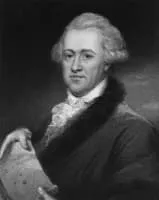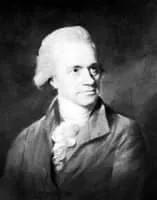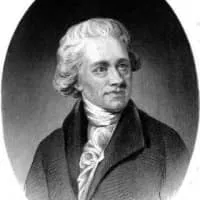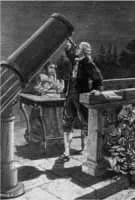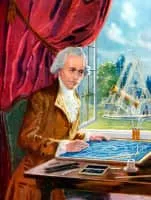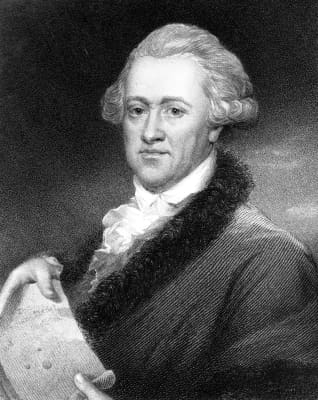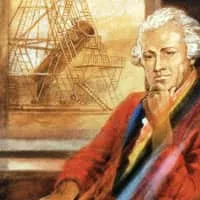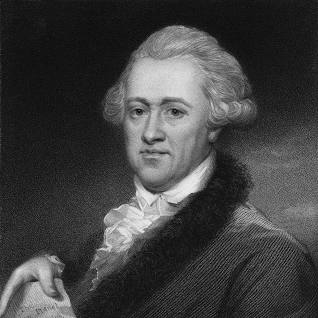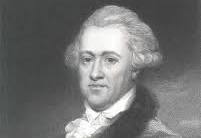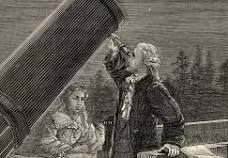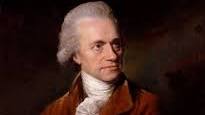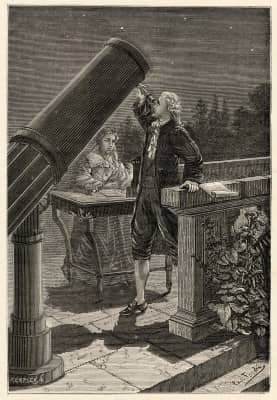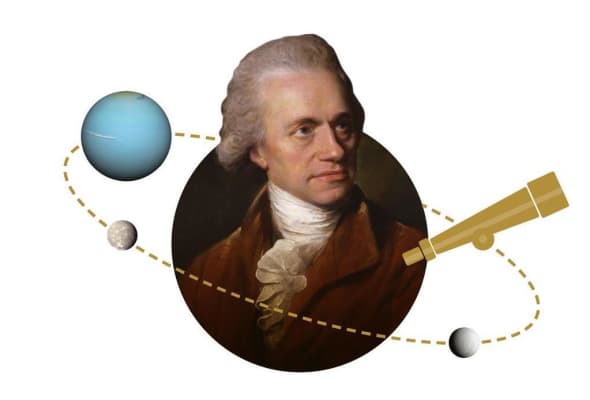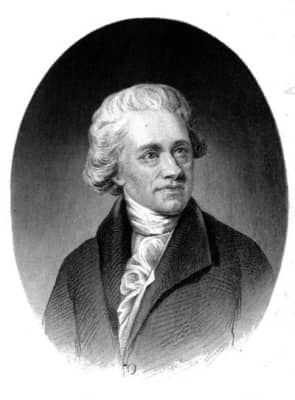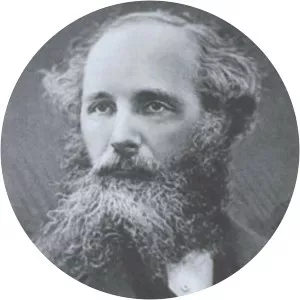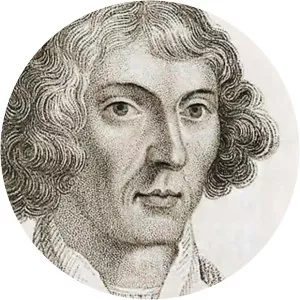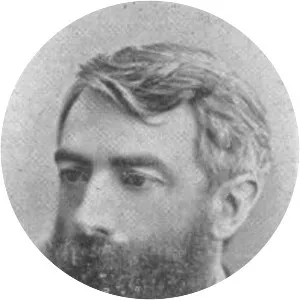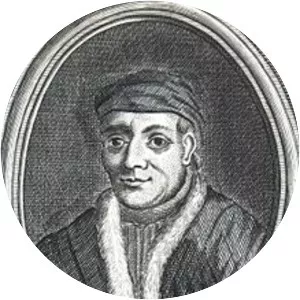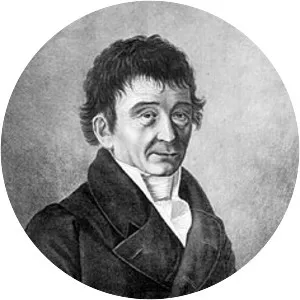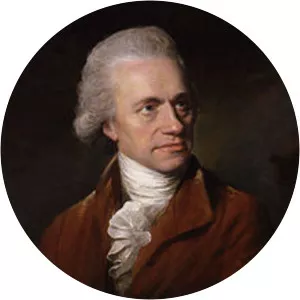
William Herschel
| Use attributes for filter ! | |
| Gender | Male |
|---|---|
| Death | 203 years ago |
| Date of birth | November 15,1738 |
| Zodiac sign | Scorpio |
| Born | Hanover |
| Germany | |
| Date of died | August 25,1822 |
| Died | Slough |
| United Kingdom | |
| Full name | Frederick William Herschel |
| Discovered | Uranus |
| Enceladus | |
| NGC 6251 | |
| Mimas | |
| Oberon | |
| Titania | |
| NGC 4473 | |
| NGC 4074 | |
| IC 1101 | |
| Markarian 590 | |
| Siblings | Johann Heinrich Herschel |
| Caroline Herschel | |
| Job | Astronomer |
| Oboist | |
| Spouse | Mary Baldwin Herschel |
| Parents | Isaac Herschel |
| Anna Ilse Moritzen | |
| Children | Sir John Frederick William Herschel |
| Date of Reg. | |
| Date of Upd. | |
| ID | 440064 |
Catalogue of Nebulae and Clusters of Stars
Catalogue of One Thousand New Nebulae and Clusters of Stars
The Scientific Papers of Sir William Herschel: Volume 2: Including Early Papers Hitherto Unpublished
On the Satellites of the Planet Saturn, and the Rotation of Its Ring on an Axis: By William Herschel, LL. D. F. R. S. From the Philosophical Transactions
The Scientific Papers of Sir William Herschel V1 (1912)
Catalogue of a Second Thousand of New Nebulæ and Clusters of Stars: With a Few Introductory Remarks on the Construction of the Heavens. By William Herschel . . . From the Philosophical Transactions
The Scientific Papers of Sir William Herschel: Volume 1: Including Early Papers Hitherto Unpublished
Description of a Forty-feet Reflecting Telescope
On the Construction of the Heavens: By William Herschel, Esq. F. R. S. Read at the Royal Society, February 3, 1785
Account of the Discovery of a Sixth and Seventh Satellite of the Planet Saturn: With Remarks on the Construction of Its Ring, Its Atmosphere, Its Rotation on an Axis, and Its Spheroidical Figure. By William Herschel . . . From the Philosophical Transactions. Read at the Royal Society, November 12, 1789
On the Discovery of Four Additional Satellites of the Georgium Sidus: . . . By William Herschel . . . From the Philosophical Transactions
On the Nature and Construction of the Sun and Fixed Stars: By William Herschel, LL. D. F. R. S. From the Philosophical Transactions
Investigation of the Powers of the Prismatic Colours to Heat and Illuminate Objects, Experiments on the Refrangibility of the Invisible Rays of the Sun Experiments on the Solar, and on the Terrestrial Rays That Occasion Heat
On the Periodical Star [alpha] Herculis: With Remarks Tending to Establish the Rotatory Motion of the Stars on Their Axes. To which is Added a Second Catalogue of the Comparative Brightness of the Stars. By William Herschel, LL. D. F. R. S. From the Philosophical Transactions
Observations of the Changeable Brightness of the Satellites of Jupiter, and of the Variation in Their Apparent Magnitudes;: With a Determination of the Time of Their Rotatory Motions on Their Axes. To which is Added, a Measure of the Diameter of the Second Satellite, and an Estimate of the Comparative Size of All the Four
On the Power of Penetrating Into Space by Telescopes: With a Comparative Determination of the Extent of that Power in Natural Vision, and in Telescopes of Various Sizes and Constructions : Illustrated by Select Observations
Experiments on the Solar, and on the Terrestrial Rays That Occasion Heat; With a Comparative View of the Laws to Which Light and Heat, . . . Are Subject, . . . by William Herschel, . . . Part II. from the Philosophical Transactions
A Third Catalogue of the Comparative Brightness of the Stars: With an Introductory Account of an Index to Mr. Flamsteed's Observations of the Fixed Stars, Contained in the Second Volume of the Historia Coelestis : to which is Added, Several Useful Results Derived from that Index
Scientific Papers, Including Early Papers Hitherto Unpublished. Collected and Edited Under the Direction of a Joint Committee of the Royal Society and the Royal Astronomical Society, with a Biographical Introd. Compiled Mainly from Unpublished Material. . . ;
Account of Some Observations Tending to Investigate the Construction of the Heavens: By William Herschel, Esq. F. R. S. Read at the Royal Society, June 17, 1784
On Nebulous Stars, Properly So Called. by William Herschel, LL. D. F. R. S. from the Philosophical Transactions
On the Method of Observing the Changes that Happen to the Fixed Stars: With Some Remarks of the Stability of the Light of Our Sun. To which is Added, Catalogue of Comparative Brightness . . . By William Herschel . . . From the Philosophical Transactions
William Herschel Life story
Frederick William Herschel KH, FRS was a German-born British astronomer and composer. He frequently collaborated with his younger sister and fellow astronomer Caroline Herschel.
James Webb telescope captures end stages of dying star's life

... " The so-called " planetary nebulae" is a misnomer that dates back to the 18th century, when the astronomer William Herschel mistook their curved shapes for those of planets...
Royal Society: Four incredible objects that made science history

... William Herschel wrote to the Society in 1782 to say he had spotted a new " primary planet of our solar system"...

... " It was the 18th-Century astronomer William Herschel who discovered the infrared...
Royal Society: Four incredible objects that made science history
By Georgina RannardBBC Climate and Science Reporter
One of The First scientific findings signed by A Woman is now online for The Public to see for the First Time .
Martha Gerrish's descriptions of The Stars in 1734 joins discoveries by Isaac Newton , Victorian Fossil Hunters and pioneer photographers.
The documents have been digitised by the scientific institution the Royal Society in London.
It hopes it will lead to more discoveries as researchers use the archive.
Around 250,000 documents can now be viewed online, covering everything from climate observations, the history of colour, How To conduct electricity, and animals.
You can access the online archive We have picked out some of the highlights:
First letter signed by A WomanIn 1734 A Woman living in New England called Martha Gerrish wrote to the Royal Society that she had spotted a rare astronomical sight called a Parhelion or 'sun Dog ' - an optical phenomenon that appears in the sky as two halos beside The Sun .
It is The First letter in The Archives of The Society 's Journal - called Philosophical Transactions - known to be sent by A Woman in her own name. Most women at The Time had limited access to formal education and would not be considered intellectual equals to men.
Ms Gerrish acknowledges this inbalance in her letter when she wrote: " If this came from a masculine hand, I believe it would be an acceptable present to the Royal Society . "
The Letter demonstrates that women have contributed to science for centuries even when their work was not public, explains Royal Society historian Louisiane Ferlier.
Victorian dinosaursDinosaur hunter Gideon Mantell sent in detailed drawings from discoveries in 1849 he made of dinosaur fossils on the Jurassic Coast , in southern England.
Some of the drawings were in fact made by his wife, explains Royal Society librarian Keith Moore , and were essential in showing other scientists what had been discovered before photography had been invented.
Drawings of the dinosaur fossils were crucial to collectors but also to anatomists who were trying to Work Out how The Bones fitted together to form an animal, Mr Moore adds.
" You've got a bunch of bones here. How are they put together? These Days we kind of know what a dinosaur looks like, but when you're starting from absolute scratch, these drawings were really helpful, " he explains.
Discovery of UranusHave a look at the original letter Written By The Scientist who discovered the Planet Uranus .
William Herschel wrote to The Society in 1782 to say he had spotted a new " primary planet of our solar system".
It was a shocking discovery at The Time , Mr Moore says, because scientists thought they understood what was in The Skies .
But William Herschel was using a powerful new telescope and " suddenly he found Something New , which was The First planet discovered in modern history".
But if Herschel had had His Way , we would be calling the Planet Uranus something totally different. His idea was to name it 'Georgium Sidus' - After the sitting King George III.
Early photography experimentsLong before smartphones and digital cameras were everywhere, inventors in the 1830s and 1840s were experimenting with a new idea.
Some of The First attempts to capture images were sent to the Royal Society .
One innovator, William Henry Fox Talbot, wrote in 1839 that he thought he had discovered something that might have " many useful and important applications".
His letters also reveal how inventions can sometimes come about through failure, explains librarian Mr Moore.
Frustrated by his poor drawing abilities, Mr Talbot turned to trying to invent a new way to capture pictures.
As well as these four finds, the Royal Society - One of The World 's leading scientific Organisations - has thousands of other objects collected since it was founded in 1660.
Ground-breaking scientists including Benjamin Franklin , Edmund Halley and Isaac Newton sent their research findings to The Society 's Journal .
But Ordinary People could also submit their ideas and discoveries in letters and pictures. One letter in 1790 from a French cloth-maker included a piece of silk that He Said demonstrated he had discovered How To make the " pinkest ever pink dye".
Making the history of science more accessible to The Public is " essential" says Ms Ferlier, who helped to digitise the archive.
" It shows how science has evolved and grew into a discipline with checks and balances that we can trust today, " she explains.
Related TopicsSource of news: bbc.com
